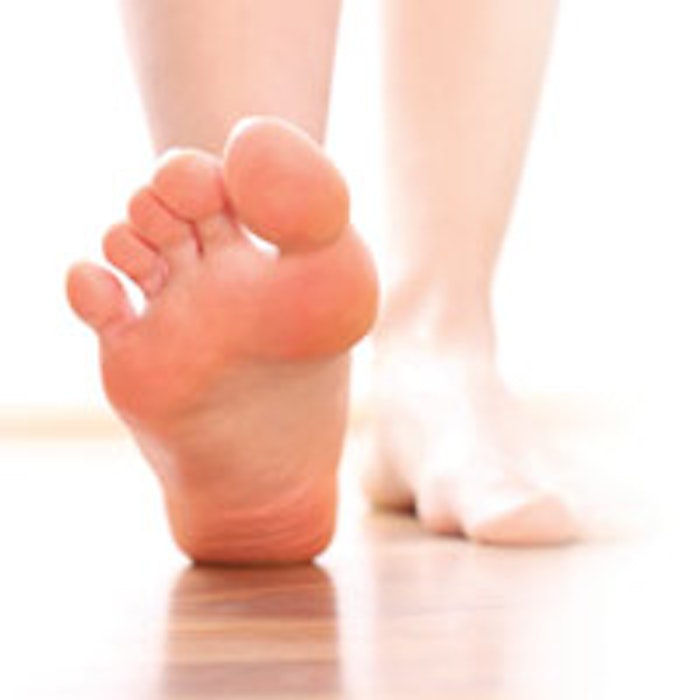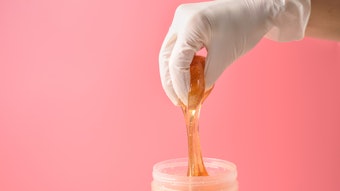
Did you know that the average person takes approximately 10,000 steps a day? This averages out to walking four times around the world and places approximately 600 metric tons of force on the soles of the feet in the course of a lifetime. That is a tremendous amount of stress and pressure on the bottoms of those important, but often neglected, appendages at the end of the legs.
The amount of pressure exerted on the feet gives a good indication that the skin on the soles must be very different than on the rest of the body.
The skin of the soles
The skin of the epidermis on the soles of the feet is much thicker; up to 1.4 mm and comprised of five distinct layers. It has to be thicker to withstand the amount of stress and pressure placed on the soles with every step. There’s more: The skin on the soles of the feet has an additional layer in the epidermis, and the skin cells are packed together in a strong, congruent membrane. The skin on the bottom of the feet also has four times more sweat glands, but does not have hair or sebaceous glands. Due to these functional features of the skin on the soles of the feet, it does not respond as readily to typical skin care techniques practiced elsewhere on the body.
The outermost layer of the epidermis, known as the stratum corneum, is crucial to the skin barrier. Made up of overlapping layers of cells, the stratum corneum keeps vital nutrients in, and damaging substances and elements out. Healthy skin keeps in moisture and protects against the entry of bacteria, fungus or viruses. Unhealthy or dry skin creates a portal of entry, leaving the skin traumatized and unable to perform its job of protection.
Lifestyle and foot issues
So why do you see so many clients with dry skin on their feet? A lot of the reason has to do with lifestyle. Today’s is a fast-paced, high-stress, super-sized lifestyle. Lack of exercise, and a diet high in sugars and simple carbohydrates can lead to a breakdown in the circulation of the lower limbs and increased incidences of diabetes. Lifestyle is the greatest contributor to developing chronic venous insufficiencies (CVI). Venous insufficiencies lead to a disruption in the function of the skin, breaking it down at an intercellular level. There are no capillaries in the epidermis; however, the skin is nourished by diffusion from the capillaries in the underlying dermis. If the capillaries are compromised, proper blood supply (nourishment) cannot be provided to the epidermis of the skin. Impaired elimination of metabolic waste due to CVI impairs the sweat glands, diminishing sweat production on the bottom of the feet. The tissue disturbances further cause a breakdown of the lipids, which are responsible for holding the cells together. The breakdown of the lipids causes the hydrolipid film to break down, leading to transdermal water loss. The skin loses elasticity and has less potential for regeneration. The intercellular water loss compromises the integrity of the skin leading to micro lesions, such as dry skin. Micro lesions are a portal of entry and can cause skin issues, such as athlete’s foot.
Recognize, recommend and refer
Effective skin management of the feet requires delivering ingredients into the skin in a manner that will enhance the skin’s function and add moisture to the epidermis. Today, skin on the feet need nonocclusive moisturizers with humectants, such as urea—not the heavy salves and occlusive creams of yesteryear. Mousse-based technology is the latest type of formulation to add moisture into the layers of the skin on the feet. And like all skin on the face and body, if it is dry, it needs moisture every day. Commonly, the skin on the feet is neglected, because most clients do not take the time to apply products. Plus, according to an independent study by the North American School of Podology, 75% of spa-going clients exhibit signs of athlete’s foot and, more often than not, it is only recognized as dry skin. Because of this, chances are good that the skin on the feet needs more than moisturizers; it also may need products that contain anti-fungal agents. Nail technicians should always practice the three Rs: recognize, recommend and refer.
Knowing the condition of the skin on the feet and recognizing skin disorders is imperative to ensure your client is receiving the right products for the right type of skin. Educating clients about the correct foot care products is imperative in maintaining the health of the skin on the feet, and enables the client to have healthy, happy feet.
Vicki Malo has been working in the beauty industry since 1986 as a highly trained esthetician, CIDESCO Diplomate, RMT and BSc Pod, and is currently the president of the North American School of Podology and vice president of education for Footlogix. Malo’s educational experience includes numerous skills: advanced skin care, advanced foot care, high level training for infection control and business issues in the skin care industry.












